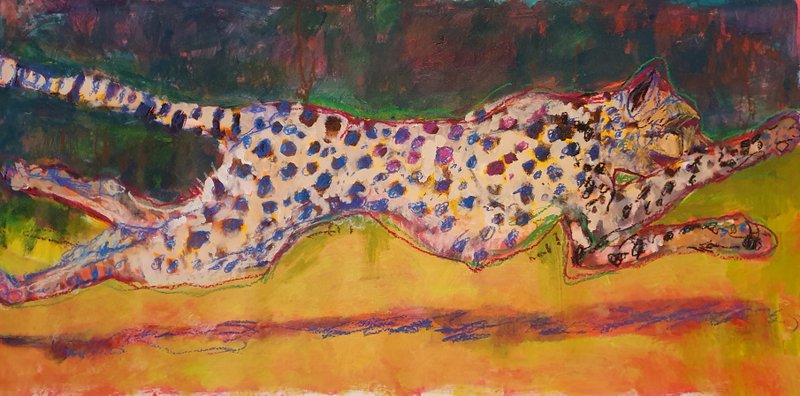Grand Canal at Dusk Blair Pessemier Acrylic/linen 15 x 22" 38 x 55 cm
Traghetti Laurie Fox Pessemier Acrylic/linen 12 x 8" 30 x 20 cm
From the Steps of St. Salute Blair Pessemier Acrylic/linen 16 x 24" 40 x 60cm
Campo St Vio Blair Pessemier Acrylic/linen 16 x 12" 40 x 30 cm
Bridge Blair Pessemier Acrylic/linen 8 x 12" 20 x 30 cm
San Fantin Blair Pessemier Acrylic/linen 18 x 15" 46 x 38 cm
Rio Grassi Blair Pessemier Acrylic/linen 16 x 12 " 40 x 30 cm
View of Venice from Giardino Laurie Fox Pessemier 7 x 15.5" 18 x 39 cm
St Marks Laurie Fox Pessemier Acrylic/linen 12 x 8" 30 x 20 cm
Artnotes: Painting the Walls
Artnotes: Painting the Walls
We took a trip off the lagoon this week to see Giotto’s
frescoes at the Scrovegni Chapel.
Scrovegni was a usurer (money lender) later featured, by name, in Dante’s
Inferno. Usurers were certain to go to hell in 1302 – Dante’s actual book wasn’t published until
12 years later. God only knows what Dante might of thought of
today’s bankers, joining Scrovegni in the seventh level of Hades. In
any case, in 1302, Giotto, the top artist of his day, was hired to decorate the
interior of this chapel, an offering to God and the Church to spare the family
from this afterlife fate. Amazingly,
Giotto completed the entire project in two years, and it is one of the best
pieces of art I have ever seen.
Giotto was a professional artist. Seeing the work I have seen on this trip to
Venice, I realize that Giotto, or Titian (200 years later), weren’t painting
like Blair and I, for pleasure and sales.
They painted when major patrons like the rich Scrovegni, or even richer,
Catholic Church, commissioned them to work.
In those centuries (14 – 16), you didn’t paint a picture and hope to
sell it. You painted a picture because a
patron had an idea of what he wanted to see depicted, maybe even with himself
in it (Scrovegni is depicted in these frescoes offering the chapel, like a doll
house, to the Virgin Mary).
A fresco is “painted”, or more accurately, applied as a colored
plaster to a wall which has been gouged to bond with the material. Many wonderful ceiling or wall paintings we
see (Titian, Tintoretto, Veronese) were actually painted on canvas and applied
to the wall or ceiling. Giotto plastered
these religious scenes to the walls and vaulted ceiling of this chapel. The areas not covered with scenes from the
life of Mary and of Christ, are trompe l’oeil-ed to look like marble.
The chapel and Giotto are also significant, because making
frescoes of this magnitude was a break from the Byzantine style mosaics which
adorned most churches. It is really the
birth of the Italian Renaissance style.
No more round staring eyes and unbendable fingers – Giotto’s characters
are flesh and blood depictions.
The ceiling of the chapel is of the deepest cobalt blue,
adorned with small white stars. Figures
fill the walls: the Massacre of the
Innocents is especially moving, with mothers’ faces, looking like ladies just
down the street, are streaked with tears.
The donkey carrying Christ on Palm Sunday is a happy, fuzzy animal. The entire chapel is a joy to see.
I am not sure I could make my living painting ceiling like
that – it must have been very cold and very hot up there. Plaster is heavy material. We don’t really see any women artists in that
medium.
Would I have been an artist if there was only commission
work? That system stayed in place well
past the Renaissance. Until the
Impressionists started painting in the 1800s, most art was done to order.
I am a little worn
out of painting this week – we’ve been making nearly a painting a day since 10
December. Blair is still at it. But Giotto kept at it for two solid years.
I took a few days off to put together a catalog of our trip
to Cervo. Take a look: http://issuu.com/paintfox/docs/cervo_book










